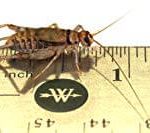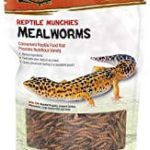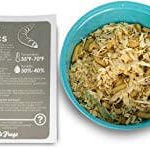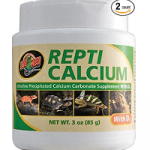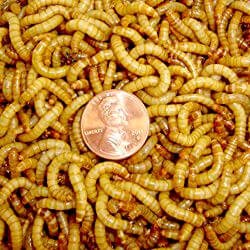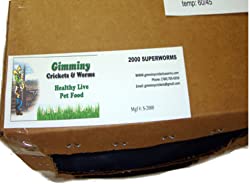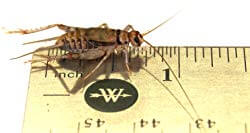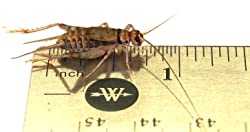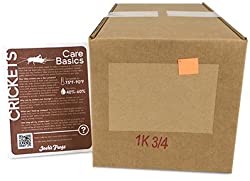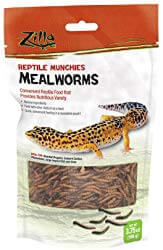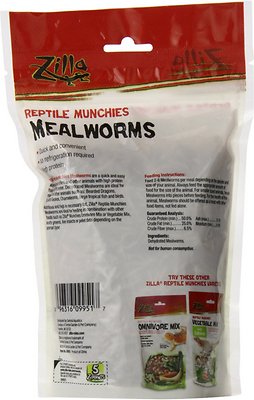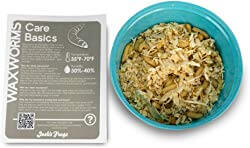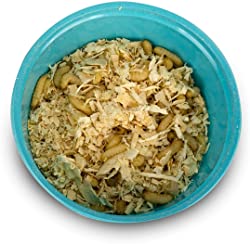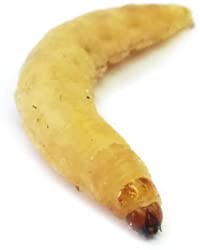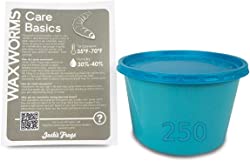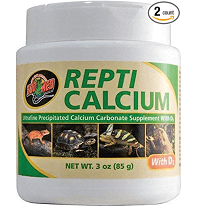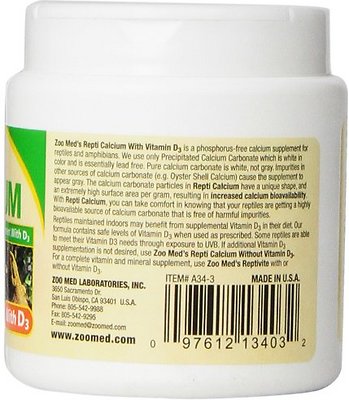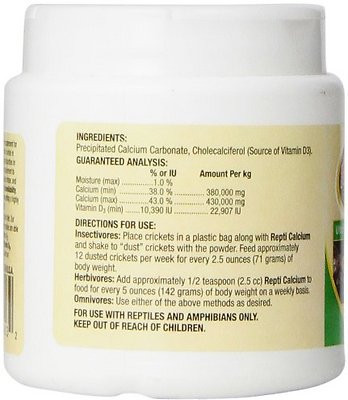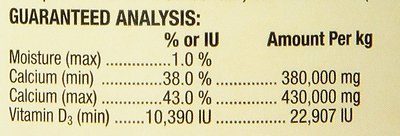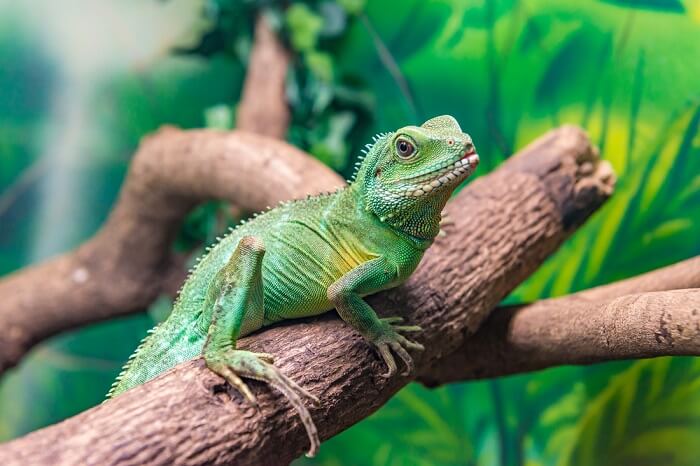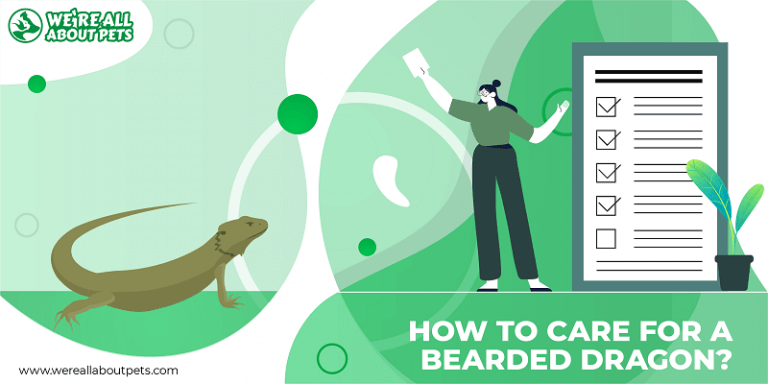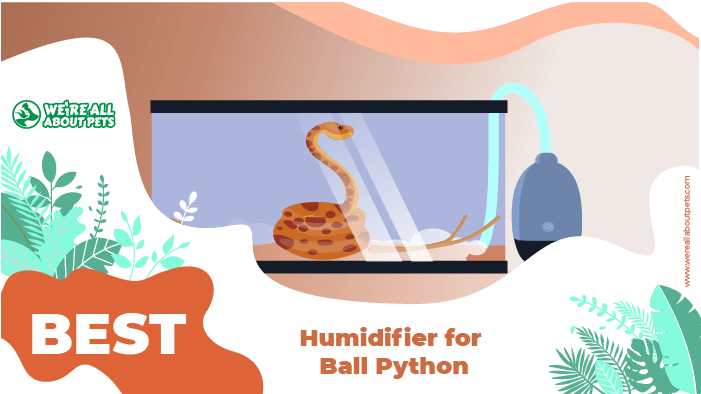The 5 Best Foods For Chameleons
This page contains affiliate links. We may earn money or products from the companies mentioned in this post through our independently chosen links, which earn us a commission. Learn More
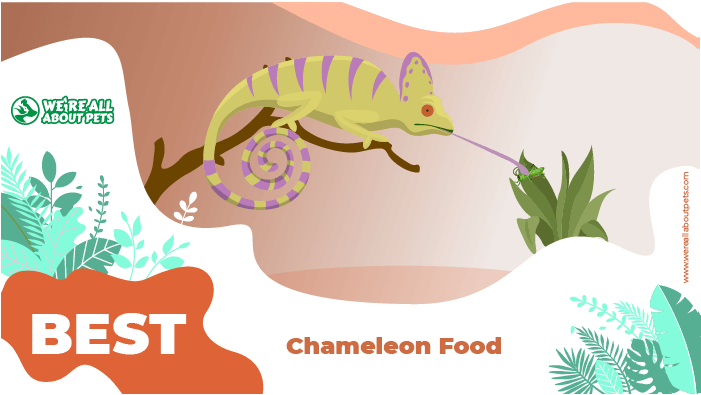
When you hear the word chameleon, you automatically picture the small, color-changing lizard. It is a well-known fact that chameleons have the amazing ability to change the color of their skin according to their surroundings.
Unfortunately, this is where many people’s knowledge of chameleons end. These little lizards make wonderful pets, but they aren’t the right choice for everyone because they have unique needs including a specific diet. They’re some of the most difficult pet reptiles to keep well.
Quick Navigation
Quick Look at Our Top Picks
We highly recommend looking at the comparison table we have below where we highlighted the features of each product. You’ll also find more detailed information about each product later in the article.
Compare Best Foods For Chameleons
|
Overall Best
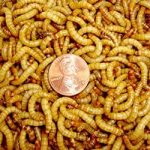
1. 2100 Live Mealworms, Organically Grown By Bassett's Cricket Ranch |
||||
|
Type
Live insects |
Type
Live insect |
Type
Dehydrated insect |
Type
Live insects |
Type
Supplement |
|
Amount
2,100 count |
Amount
1000 count |
Amount
3.75 ounces |
Amount
250 count |
Amount
3 ounces |
|
Key Ingredients
Mealworms |
Key Ingredients
Banded crickets |
Key Ingredients
Mealworms |
Key Ingredients
Waxworms |
Key Ingredients
Calcium carbonate |
What To Look For In Food For Chameleons
Young chameleons are typically a dull color and they have the ability to change shades to a slight degree. Their full color-changing ability doesn’t develop until around 5 months of age.
In order to reach that milestone, your chameleon requires an adequate habitat and a healthy, balanced diet. Chameleons subsist primarily on insects, though you may need to supplement with vitamin and mineral supplements as well as fresh foods.
Here are some important things to look for in chameleon food:
- Real insects. Chameleons are omnivorous animals with a diet primarily composed of insects, so they require a diet high in protein. Insects should be the foundation of your chameleon’s diet with crickets making up no more than 50% of its daily intake. Aim for a balanced blend of high-protein and high-fat insects.
- Live or freeze-dried. Live insects are best for chameleons, provided they come from trustworthy sources. In a pinch, or to supplement your lizard’s intake, you can feed freeze-dried insects, if your chameleon will accept them.
- No artificial additives. There is no need for your chameleon’s insects to be artificially treated with any colors, flavors, or preservatives. The freeze-drying process is adequate.
- Fortified with nutrients. When buying freeze-dried insects, you may find that some contain added calcium or vitamin D. If you’re feeding fresh insects, coat them with a nutrient powder.
Now that you have a better idea what to look for in a chameleon food, it’s time to start shopping! Keep reading to see our top 5 picks for the best chameleon foods.
Our Top Picks For The Best Foods For Chameleons
2100 Live Mealworms, Organically Grown By Bassett's Cricket Ranch
Product Info
- Type: Live insects
- Amount: 2,100 count
- Key Ingredients: Mealworms
Guaranteed Analysis

Dry Matter Basis

- Grown organically for maximum quality
- Choose from a variety of quantities
- Excellent source of nutrients for chameleons
- Some may arrive dead depending on shipping and weather
This means that they’ve never been exposed to any chemicals, making them a completely safe meal option for your chameleon. Order a variety of different quantities according to your needs.
Josh's Frogs 3/4"" Banded Crickets
Product Info
- Type: Live insect
- Amount: 1000 count
- Key Ingredients: Banded crickets
Guaranteed Analysis

Dry Matter Basis

- Hearty species higher in protein
- Arrive alive guarantee
- Gut-loaded to maximize nutritional value
- May be tricky to choose the right size
- Some may arrive dead due to shipping and weather
These banded crickets from Josh’s Frogs are properly gut-loaded to maximize their nutritional content for your chameleon and they come with a live delivery guarantee. That’s because they are a unique species (Gryllodes sigillatus) which is heartier than other cricket species and is also higher in protein. It’s a win-win for your chameleon.
Zilla Reptile Munchies Mealworms Lizard Food
Product Info
- Type: Dehydrated insect
- Amount: 3.75 ounces
- Key Ingredients: Mealworms
Guaranteed Analysis

Dry Matter Basis

- Highly affordable price
- Dehydrated to preserve nutrients
- Resealable, no refrigeration needed
- Some chameleons don’t accept anything but live insects
- May have an unpleasant odor
- A great deal of your chameleon’s hydration normally comes from food, and the dehydrated insects provide little water content
They do not need to be refrigerated and come in a convenient resealable pouch. Choose from a 3.75-ounce or 0.5-ounce package and include them in your chameleon’s staple diet or offer them as a crunchy treat.
Josh's Frogs Waxworms
Product Info
- Type: Live insects
- Amount: 250 count
- Key Ingredients: Waxworms
Guaranteed Analysis

Dry Matter Basis

- Gut-loaded to maximize nutritional value
- Shipped quickly in a secure container
- Variety of quantities to choose from
- Some may not arrive alive depending on weather
- High fat content needs to be balanced with protein
Choose from a number of different quantities and know that your chameleon is getting the best of the best. It will always be happy to enjoy a meal of juicy waxworms.
Zoo Med Repti Calcium
Product Info
- Type: Supplement
- Amount: 3 ounces
- Key Ingredients: Calcium carbonate
- Highly bioavailable source for nutrients
- Calcium supplement
- Fine powder easily coats insects for feeding
- Some containers arrive clumped together
- May have an unpleasant odor
Along with a proper UV light source that is changed regularly, this will help ensure your pet has adequate calcium and D3.
Tips For Feeding A Chameleon
Chameleons are challenging pets to keep for a number of reasons, including their need for live insects and nutrient fortification. If you’re not willing to provide for your chameleon’s specific needs, you may want to consider another pet. It is not difficult to feed a chameleon, but you do need to pay attention to the details and choose the right foods.
Here are some simple tips for feeding a chameleon properly:here are some simple tips for feeding a chameleon properly:
- Feed your chameleon as many different types of insects as possible – this is the best way to ensure that its nutritional needs are met.
- Do not offer crickets as more than 50% of your chameleon’s diet.
- Make sure your live insects are gut-loaded prior to giving them to your chameleon – this simply means feeding them nutritious foods, so the nutrients are transferred to your chameleon.
- Dust your chameleon’s insects with a calcium supplement at every feeding. Use a vitamin supplement with D3 and pre-formed Vitamin A weekly.
- Offer your pet small amounts of fresh greens and other veggies a few times a week.
Now that you have a better understanding of your chameleon’s nutritional needs, you have the information you need to put together a healthy and balanced diet. Just make sure to choose high-quality insects to feed it.
Final Remarks
Chameleons require real insects as the staple of their diet, so you may have a harder time finding them online than other commercial reptile foods. When shopping for chameleon food, just look for products that are as natural as possible. If you’re still not sure where to start in looking for a chameleon food, try out one of the top 5 best chameleon foods we’ve reviewed above. Good luck!






